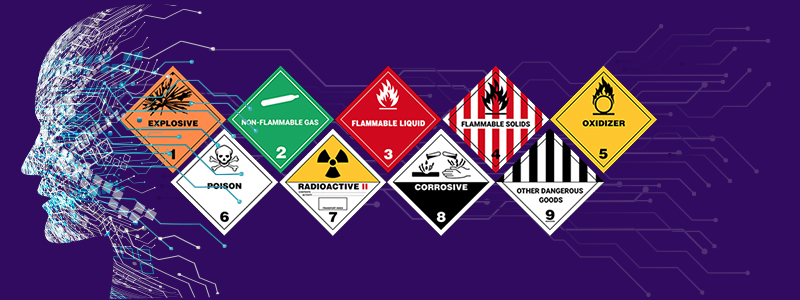Even the most mundane of goods can be dangerous when transported. When importing or exporting these goods, you need to ensure that they do not pose any threat to the recipient or the environment in transit. To help in this process, dangerous goods are classified using a numerical system based on their danger level. Goods that pose an immediate threat to human life and those that pose a greater threat to the environment are classified as dangerous goods. Dangerous goods are categorized into six different groups, each with a specific set of requirements that they must meet to be classified as a dangerous good. For example, flammable goods and corrosive goods require different handling requirements. Apart from their inherent dangers, dangerous goods may pose a threat to the environment during their transportation. This is why they are kept in specially designed containers and transported in specially designed transport vehicles. This blog will discuss the dangerous goods classification system, the different types of dangerous goods, and ways you can use Artificial Intelligence to classify the dangerous goods on your own.
What problem does the Dangerous Goods Classification using AI solve?
The Dangerous Goods Classification using AI solves the problem of how to properly categorize the dangerous goods that are transported through the global supply chain. Knowing the correct classification of the goods can help ensure that they are handled and transported in a way that is both safe and efficient. For example, if you import glass containers filled with dry ice from South America, they are classified as a dangerous good as they pose a direct threat to human life if they break during transportation. However, when importing dry ice from China, it is classified as a non-dangerous good. This categorization helps you determine the right level of protection for your goods and their transport services.
Why is the Dangerous Goods Classification using AI important?
The Dangerous Goods Classification using AI is important because it allows you to classify the dangerous goods that are transported through the supply chain. By knowing the correct classification system for the goods, you can ensure that they are properly handled from start to finish. For example, when a shipment filled with glass containers of dry ice from South America arrives at your port, it is classified as a dangerous good and must be handled according to the rules. When the same shipment is exported to a port in Asia, it is classified as a non-dangerous good and does not need to go through any special handling. This classification system is based on the inherent dangers of the goods and the level of threat they pose to the environment during transport.
How does the Dangerous Goods Classification using AI work?
The Dangerous Goods Classification using AI works by analyzing images of the goods and their containers. This allows our AI system to classify the goods in real-time, without requiring human input. Once the AI has classified the goods, it is able to keep track of the goods and their transport process. With this information, you can see how AI is helping to improve the global supply chain. You can sign up for a real-time demo of the AI system so you can see how it works in action.
How dangerous goods are classified currently?
When a shipment arrives at a port, it is classified as a dangerous good based on the standards of the country where it is imported from. If it is then exported from that country, it is also classified as a dangerous good. If the same goods are imported to a new country, they are again classified as dangerous goods, unless the country has a special classification agreement with the country from which they are imported.
Conclusion
As technological advancements continue, it is not surprising that AI is becoming an integral part of our lives. The dangerous goods classification system is no different. With the rise of AI, this system can now be handled by machines, which will make this process safer and more efficient. To know how DeepDatum can help, please contact us via https://www.deeptaum.ai


Leave A Comment